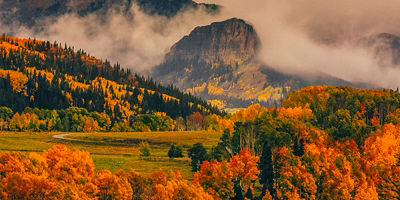
At the beginning of the 20th century, the United States was grappling with how to manage vast tracts of federal land. The first national park had been established just a generation earlier, and across the West “forest reserves” had recently been created. Competing forces advocated for protecting natural resources and using them.
In 1905, President Roosevelt transferred the care of a swath of public lands in the West to the newly formed United States Forest Service. Under its first chief, Gifford Pinchot, the agency was tasked with managing these “national forests” to provide quality water and timber for the country.
Pinchot was a staunch conservationist and likely the first American to get a formal education in forestry (he attended the National School of Waters and Forests in France in 1900 and would go on to found the Yale School of Forestry). Under Pinchot’s leadership, the number of national forests in the United States skyrocketed, increasing from 32 to 149. (Today, Washington’s Gifford-Pinchot National Forest––containing Mount St. Helens and Mount Adams––bears his name.)
“Unless we practice conservation, those who come after us will have to pay the price of misery, degradation and failure for the progress and prosperity of our day,” said Pinchot. The purpose of the Forest Service, according to Pinchot, was “to provide the greatest amount of good for the greatest amount of people in the long run.”
From El Yunque in Puerto Rico (the only tropical rainforest in the national forest system) to Alaska’s 17 million-acre Tongass National Forest (its largest), today’s Forest Service manages 155 national forests and 20 national grasslands. In all, that land totals 193 million acres. The Forest Service also works with state and local agencies to help care for 500 million acres of non-federal forests.
The Forest Service’s mission has evolved over the last century, but Pinchot’s “greater good” philosophy still underlies the agency’s management approach. Its mission is “to sustain the health, diversity, and productivity of the nation’s forests and grasslands to meet the needs of present and future generations.”
While most people today see our national forests as refuges for recreation—hiking, camping, paddling, climbing, biking, and more—they also provide important environmental benefits. National forests are an invaluable source of water: More than 180 million people in 68,000 communities rely on forest lands for their drinking water. Major cities like Denver, Los Angeles, and Portland are reliant on national forests for their water supply. Forests also offset 10% of the country’s carbon emissions and their very existence is critically important in combating climate change.






















